Review of Major Influencing Factors Contributing to Persisting Safety Problems in Coal Mines: Addressing Systemic Challenges
Abstract
1. Introduction
2. Search Strategy
3. Energy Dilemma: Coal Resources and Power Demand
4. Current Health and Safety Scenario
5. Comparison of Coal Mining Safety Between Pakistan and the World
6. Conclusions
Funding
Data Availability Statement
Acknowledgments
Conflicts of Interest
References
- Shahani, N.M.; Wan, Z.; Ali, M.; Ullah, B. Detection and monitoring of underground coal mine gases at Lakhra Coal Mines, Pakistan. In Proceedings of the 35th Annual International Pittsburgh Conference, Zuzhou, China, 15–18 October 2018; pp. 1–8. [Google Scholar]
- Jiskani, I.M.; Ullah, B.; Shah, K.S.; Bacha, S.; Shahani, N.M.; Ali, M.; Maqbool, A.; Qureshi, A.R. Overcoming mine safety crisis in Pakistan: An appraisal. Process Saf. Prog. 2019, 38, e12041. [Google Scholar] [CrossRef]
- Ullah, M.F.; Mahmood, K.; Akram, M.S. Coal mining trends and future prospects: A case study of Eastern Salt Range, Punjab, Pakistan. J. Himal. Earth Sci. 2018, 51, 87. [Google Scholar]
- CEIC. Pakistan Coal Production. Available online: https://www.ceicdata.com/en/indicator/pakistan/coal-production#:~:text=Production%20in%202022%3F-,Pakistan%20Coal%20Production%20was%20reported%20at%209.900%20Tonne%20mn%20in,table%20below%20for%20more%20data (accessed on 7 July 2024).
- The Global Economy. Pakistan: Coal Imports. 2022. Available online: https://www.theglobaleconomy.com/Pakistan/coal_imports/ (accessed on 7 July 2024).
- Businerss Recorder. Mining Sector Likely to Get Status of Industry. Available online: https://www.brecorder.com/news/40188393 (accessed on 7 July 2024).
- Rauf, O.; Wang, S.; Yuan, P.; Tan, J. An overview of energy status and development in Pakistan. Renew. Sustain. Energy Rev. 2015, 48, 892–931. [Google Scholar] [CrossRef]
- Mirjat, N.H.; Uqaili, M.A.; Harijan, K.; Valasai, G.D.; Shaikh, F.; Waris, M. A review of energy and power planning and policies of Pakistan. Renew. Sustain. Energy Rev. 2017, 79, 110–127. [Google Scholar] [CrossRef]
- Latif, A.; Ramzan, N. A review of renewable energy resources in Pakistan. J. Glob. Innov. Agric. Soc. Sci. 2014, 2, 127–132. [Google Scholar] [CrossRef]
- Malkani, M.S. A review of coal and water resources of Pakistan. J. Sci. Technol. Dev. 2012, 31, 202–218. [Google Scholar]
- IndustriAll Global Union. 27 Coalminers Killed in Pakistan So Far in 2019. 2019. Available online: https://www.industriall-union.org/27-coalminers-killed-in-pakistan-so-far-in-2019 (accessed on 7 July 2024).
- Naveed, M.A.; Ali, A. Health and safety information behaviour of coal miners in Pakistan. Libri 2021, 71, 29–40. [Google Scholar] [CrossRef]
- Aljazeera. Seven Killed in Southwest Pakistan Coal Mining Disaster. 2021. Available online: https://www.aljazeera.com/news/2021/3/16/seven-killed-in-southwest-pakistan-coal-mining-disaster (accessed on 7 July 2024).
- Business and Human Rights Resource Centre. Pakistan: Over 318 Workers Killed in Last Eight Years in Coal Mines in Balochistan. 2018. Available online: https://www.business-humanrights.org/de/neuste-meldungen/pakistan-over-318-workers-killed-in-last-eight-years-in-coal-mines-in-balochistan/ (accessed on 5 July 2024).
- Shahani, N.M.; Sajid, M.J.; Zheng, X.; Brohi, M.A.; Jiskani, I.M.; Ul Hassan, F.; Qureshi, A.R. Statistical analysis of fatalities in underground coal mines in Pakistan. Energy Sources Part A Recovery Util. Environ. Eff. 2020, 1–16. [Google Scholar] [CrossRef]
- Shahani, N.M.; Sajid, M.J.; Brohi, M.A.; Qureshi, A.R.; Shahani, L.B.; Bacha, S.; Ullah, B. An empirical analysis of fatal accidents in the coal mines of Pakistan. In Proceedings of the International Conference on Energy, Resources, Environment and Sustainable Development, Xuzhou, China, 31 May–3 June 2019; pp. 726–733. [Google Scholar]
- Shahani, N.M.; Sajid, M.J.; Zheng, X.; Jiskani, I.M.; Brohi, M.A.; Ali, M.; Ullah, B.; Qureshi, A.R. Fault tree analysis and prevention strategies for gas explosion in underground coal mines of Pakistan. Min. Miner. Depos. 2019, 13, 121–128. [Google Scholar] [CrossRef]
- Shahani, N.M.; Sajid, M.J.; Jiskani, I.M.; Ullah, B.; Qureshi, A.R. Comparative analysis of coal Miner’s fatalities by fuzzy logic. J. Min. Environ. 2021, 12, 77–87. [Google Scholar]
- Sherin, S.; Rehman, Z.; Hussain, S.; Mohammad, N.; Raza, S. Hazards identification and risk analysis in surface mines of Pakistan using fault tree analysis technique. Min. Miner. Depos. 2021, 15, 119–126. [Google Scholar] [CrossRef]
- Coal mining in Pakistan. 2023. Available online: https://en.wikipedia.org/wiki/Coal_mining_in_Pakistan#cite_note-2 (accessed on 7 July 2024).
- Shakeel, S.R.; Takala, J.; Shakeel, W. Renewable energy sources in power generation in Pakistan. Renew. Sustain. Energy Rev. 2016, 64, 421–434. [Google Scholar] [CrossRef]
- Aftab, S. Pakistan’s energy crisis: Causes, consequences and possible remedies. Expert Anal. Nor. 2014, 1–6. Available online: https://www.files.ethz.ch/isn/177484/ade59fba5daf67a11a1c217434abf440.pdf (accessed on 7 July 2024).
- Anwar, J. Analysis of energy security, environmental emission and fuel import costs under energy import reduction targets: A case of Pakistan. Renew. Sustain. Energy Rev. 2016, 65, 1065–1078. [Google Scholar] [CrossRef]
- Omer, A.M. Sustainable Energy Development, the Role of Renewables and Global Warming. J. Sustain. Dev. Stud. 2012, 1, 1–67. [Google Scholar]
- Farooq, M.; Shakoor, A. Severe energy crises and solar thermal energy as a viable option for Pakistan. J. Renew. Sustain. Energy 2013, 5, 013104. [Google Scholar] [CrossRef]
- CEIC. Pakistan Coal Production. 2022. Available online: https://www.ceicdata.com/en/indicator/pakistan/coal-production (accessed on 7 July 2024).
- CEIC. Pakistan Coal Consumption: Total. 2018. Available online: https://www.ceicdata.com/en/pakistan/energy-consumption-and-supplies-annual/coal-consumption-total (accessed on 7 July 2024).
- The Nation. Power Sector Remains Biggest Consumer of Coal in Pakistan. 2023. Available online: https://www.nation.com.pk/01-Jul-2023/power-sector-remains-biggest-consumer-of-coal-in-pakistan (accessed on 7 July 2024).
- Bilal, A.S. Country Report of Pakistan. In Proceedings of the JICA Training on Energy Policy, Tokyo, Japan, 26 June–23 July 2016. [Google Scholar]
- Pakistan Coal. 2016. Available online: https://www.worldometers.info/coal/pakistan-coal/ (accessed on 7 July 2024).
- Sajid, M.J.; Shahani, N.; Ali, M. Calculating inter-sectoral carbon flows of a mining sector via hypothetical extraction method. J. Min. Environ. 2019, 10, 853–867. [Google Scholar]
- Shah, S.A.H. Strategy for Mineral Sector Development in Pakistan; Ministry of Planning: Islamabad, Pakistan, 2018; pp. 1–24.
- Department of the Interior, U.S. Geological Survey. Available online: https://pubs.usgs.gov/of/1988/0251/report.pdf (accessed on 7 July 2024).
- Qureshi, A.A.; Kakar, D.M.; Akram, M.A.; Khattak, N.U.; Tufail, M.; Mehmood, K.; Jamil, K.; Khan, H.A. Radon concentrations in coal mines of Baluchistan, Pakistan. J. Environ. Radioact. 2000, 48, 203–209. [Google Scholar] [CrossRef]
- Pakistan Mineral Development Corporation. Available online: https://www.pmdc.gov.pk/ (accessed on 7 July 2024).
- Jiskani, I.M.; Cai, Q.; Zhou, W.; Chang, Z.; Chalgri, S.R.; Manda, E.; Lu, X. Distinctive model of mine safety for sustainable mining in Pakistan. Min. Metall. Explor. 2020, 37, 1023–1037. [Google Scholar] [CrossRef]
- Jiskani, I.M.; Han, S.; Rehman, A.U.; Shahani, N.M.; Tariq, M.; Brohi, M.A. An integrated entropy weight and grey clustering method–based evaluation to improve safety in mines. Min. Metall. Explor. 2021, 38, 1773–1787. [Google Scholar] [CrossRef]
- Janjuhah, H.T.; Ishfaque, M.; Mehmood, M.I.; Kontakiotis, G.; Shahzad, S.M.; Zarkogiannis, S.D. Integrated underground mining hazard assessment, management, environmental monitoring, and policy control in Pakistan. Sustainability 2021, 13, 13505. [Google Scholar] [CrossRef]
- Rehman, A.U.; Emad, M.Z.; Khan, M.U.; Saleem, M.A.; Saki, S.A. Investigation and analysis of fatal accident reporting practices in the Punjab province of Pakistan and remedial measures. Resour. Policy 2021, 73, 102186. [Google Scholar] [CrossRef]
- Ayaz, M.; Jehan, N.; Nakonieczny, J.; Mentel, U. Health costs of environmental pollution faced by underground coal miners: Evidence from Balochistan, Pakistan. Resour. Policy 2022, 76, 102536. [Google Scholar] [CrossRef]
- Jiskani, I.M.; Yasli, F.; Hosseini, S.; Rehman, A.U.; Uddin, S. Improved Z-number based fuzzy fault tree approach to analyze health and safety risks in surface mines. Resour. Policy 2022, 76, 102591. [Google Scholar] [CrossRef]
- Jiskani, I.M.; Zhou, W.; Hosseini, S.; Wang, Z. Mining 4.0 and climate neutrality: A unified and reliable decision system for safe, intelligent, and green & climate-smart mining. J. Clean. Prod. 2023, 410, 137313. [Google Scholar]
- Javaid, A.; Siddique, M.A.; Reshi, A.A.; Rustam, F.; Lee, E.; Rupapara, V. Coal mining accident causes classification using voting-based hybrid classifier (VHC). J. Ambient Intell. Humaniz. Comput. 2023, 14, 13211–13221. [Google Scholar] [CrossRef]
- Yang, L.; Birhane, G.E.; Zhu, J.; Geng, J. Mining employees safety and the application of information technology in coal mining. Front. Public Health 2021, 9, 709987. [Google Scholar] [CrossRef]
- Dursun, A.E. Fatal Accident Analysis and Hazard Identification in Turkish Coal-Extracting Industry Using Analytic Hierarchy Process. Min. Metall. Explor. 2024, 41, 149–172. [Google Scholar] [CrossRef]
- Kumar, P.P.; Paul, P.S.; Ananda, M. Development of LoRa Communication System for Effective Transmission of Data from Underground Coal Mines. Processes 2023, 11, 1691. [Google Scholar] [CrossRef]
- Rahimdel, M.J.; Aryafar, A.; Vaziri, S. Fuzzy FMEA for the safety risk analysis of underground coal mining (a case study in Iran). Min. Technol. 2022, 131, 104–114. [Google Scholar] [CrossRef]
- Margolis, K.A. Underground coal mining injury: A look at how age and experience relate to days lost from work following an injury. Saf. Sci. 2010, 48, 417–421. [Google Scholar] [CrossRef]
- Connolly, E.; Orsmond, D. The Mining Industry: From Bust to Boom|Conference–2011. 2011. Available online: https://www.rba.gov.au/publications/confs/2011/connolly-orsmond.html (accessed on 9 July 2024).
- Liu, Q.; Meng, X.; Hassall, M.; Li, X. Accident-causing mechanism in coal mines based on hazards and polarized management. Saf. Sci. 2016, 85, 276–281. [Google Scholar] [CrossRef]
- Liu, Q.; Peng, Y.; Li, Z.; Zhao, P.; Qiu, Z. Hazard identification methodology for underground coal mine risk management-Root-State Hazard Identification. Resour. Policy 2021, 72, 102052. [Google Scholar] [CrossRef]
- Liu, Q.; Dou, F.; Meng, X. Building risk precontrol management systems for safety in China’s underground coal mines. Resour. Policy 2021, 74, 101631. [Google Scholar] [CrossRef]
- Bhattacherjee, A.; Kunar, B.M.; Baumann, M. Associations between occupational factors and occupational injury and the interplay of personal factors in Indian and French coal miners. In The 34th International Conference of Safety in Mines Research Institutes (34th ICSMRI); Macmillan Publishers India Ltd.: New Delhi, India, 2011; pp. 481–493. [Google Scholar]
- Bhattacherjee, A.; Kunar, B.M.; Baumann, M.; Chau, N.; Lorhandicap Group. The role of occupational activities and work environment in occupational injury and interplay of personal factors in various age groups among Indian and French coalminers. Int. J. Occup. Med. Environ. Health 2013, 26, 910–929. [Google Scholar] [CrossRef] [PubMed]
- Liu, Q.; Li, X.; Meng, X. Effectiveness research on the multi-player evolutionary game of coal-mine safety regulation in China based on system dynamics. Saf. Sci. 2019, 111, 224–233. [Google Scholar] [CrossRef]
- Spanidis, P.M.; Pavloudakis, F.; Roumpos, C. The Knowledge Management Landscape in the Greek Coal Mining Industry. Min. Metall. Explor. 2024, 41, 819–841. [Google Scholar] [CrossRef]
- Reason, J. Managing the Risks of Organizational Accidents; Routledge: London, UK, 2016. [Google Scholar]
- Esmaeilzadeh, A.; Shaffiee Haghshenas, S.; Mikaeil, R.; Guido, G.; Shirani Faradonbeh, R.; Abbasi Azghan, R.; Jafarpour, A.; Taghizadeh, S. Risk Assessment in Quarries using Failure Modes and Effects Analysis Method (Case study: West-Azerbaijan Mines). J. Min. Environ. 2022, 13, 715–725. [Google Scholar]
- Sanmiquel, L.; Rossell, J.M.; Bascompta, M.; Vintró, C.; Yousefian, M. Data mining of accidents in Spanish underground mines in the period 2003–2021 caused by a collision with a moving object. Heliyon 2024, 10, e24716. [Google Scholar] [CrossRef]
- Yu, H.; Zahidi, I.; Chow, M.F. Vegetation as an ecological indicator in assessing environmental restoration in mining areas. iScience 2023, 26, 107667. [Google Scholar] [CrossRef]
- De Dianous, V.; Fievez, C. ARAMIS project: A more explicit demonstration of risk control through the use of bow–tie diagrams and the evaluation of safety barrier performance. J. Hazard. Mater. 2006, 130, 220–233. [Google Scholar] [CrossRef] [PubMed]
- Chevreau, F.R.; Wybo, J.L.; Cauchois, D. Organizing learning processes on risks by using the bow-tie representation. J. Hazard. Mater. 2006, 130, 276–283. [Google Scholar] [CrossRef] [PubMed]
- Chau, N.; Wild, P.; Dehaene, D.; Benamghar, L.; Mur, J.M.; Touron, C. Roles of age, length of service and job in work-related injury: A prospective study of 446 120 person-years in railway workers. Occup. Environ. Med. 2010, 67, 147–153. [Google Scholar] [CrossRef] [PubMed]
- Ukey, N.; Yang, Z.; Li, B.; Zhang, G.; Hu, Y.; Zhang, W. Survey on exact knn queries over high-dimensional data space. Sensors 2023, 23, 629. [Google Scholar] [CrossRef]
- Sharma, M.; Maity, T. Review on machine learning-based underground coal mines gas hazard identification and estimation techniques. Arch. Comput. Methods Eng. 2024, 31, 371–388. [Google Scholar] [CrossRef]
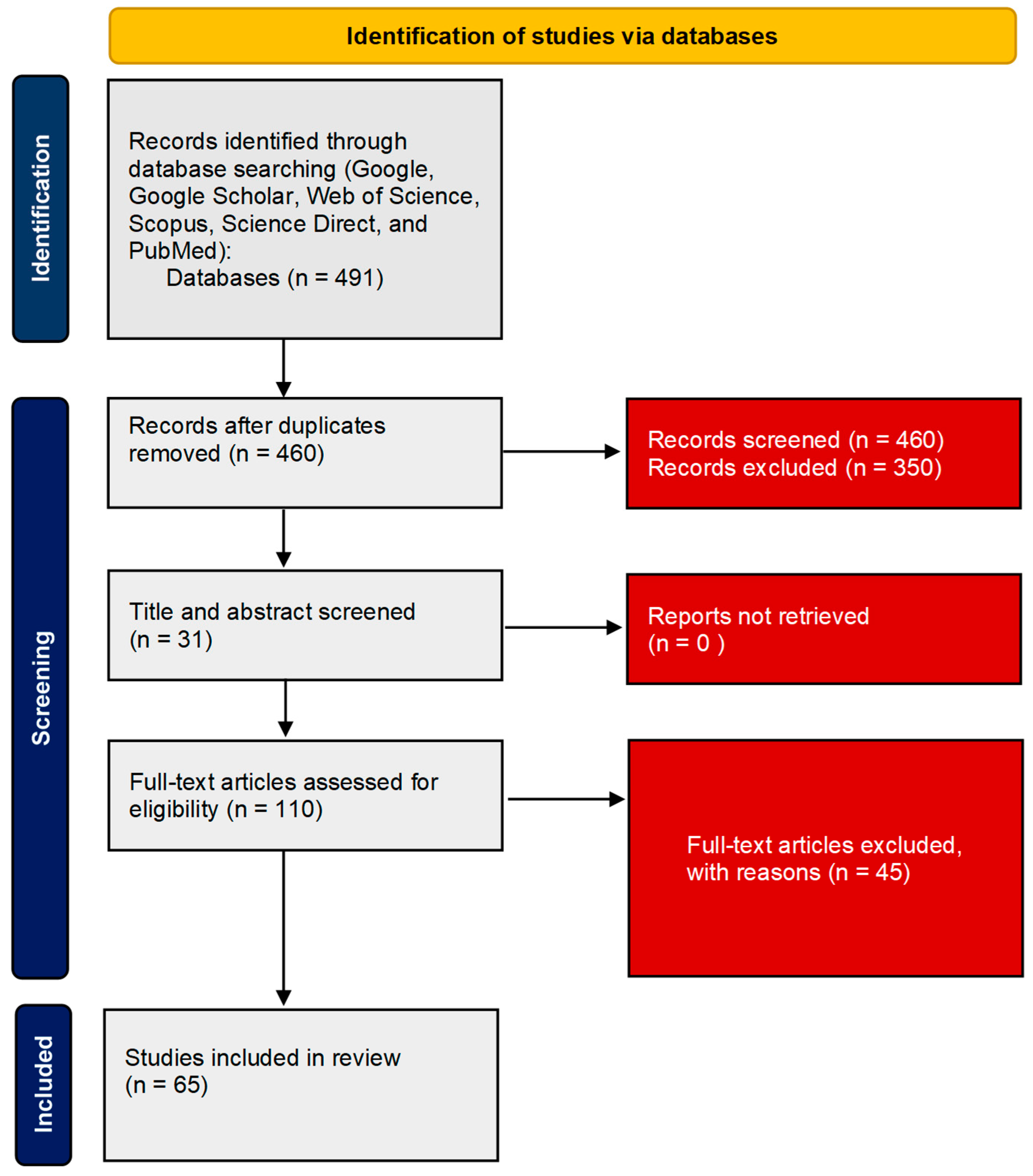
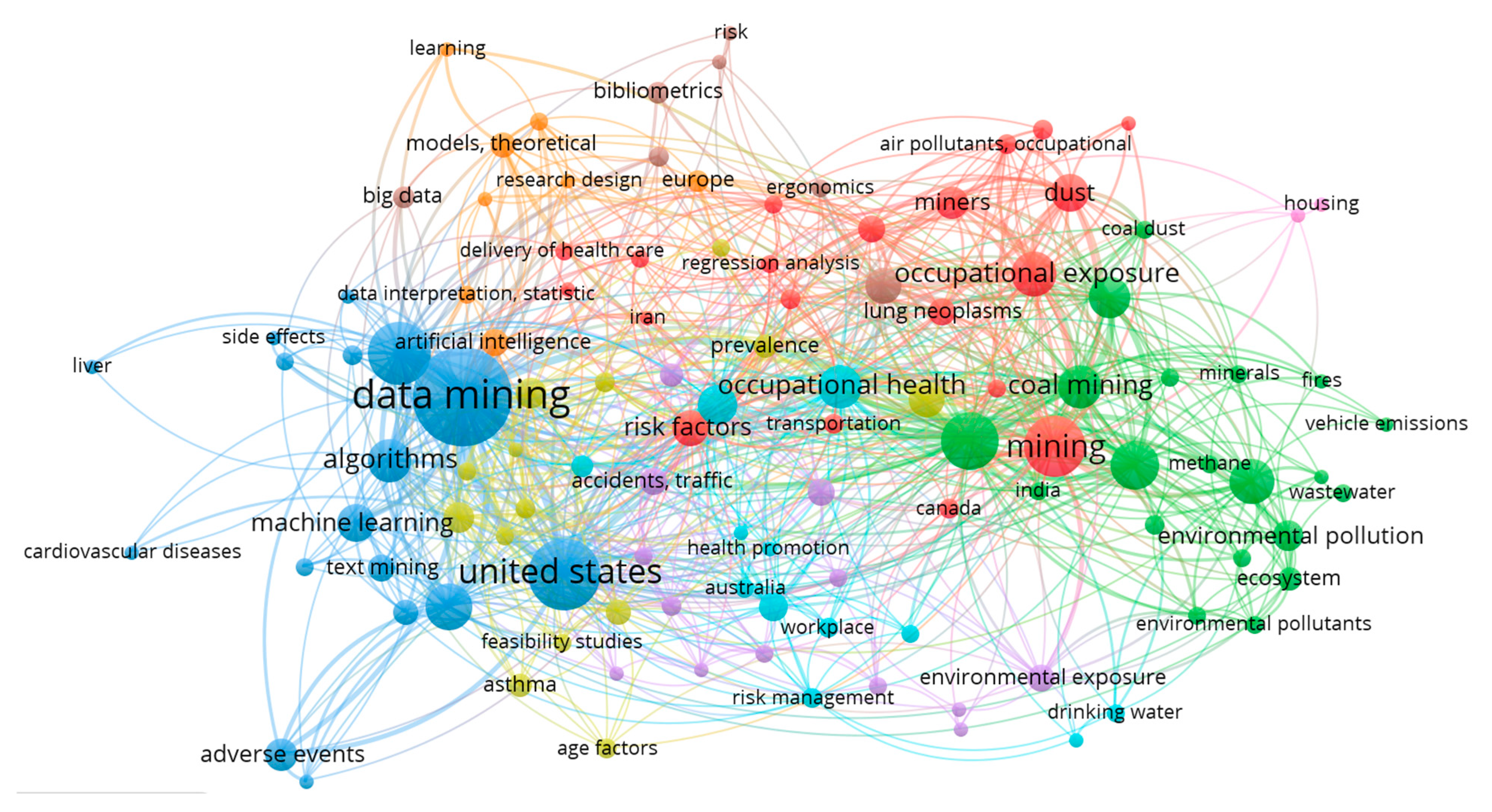
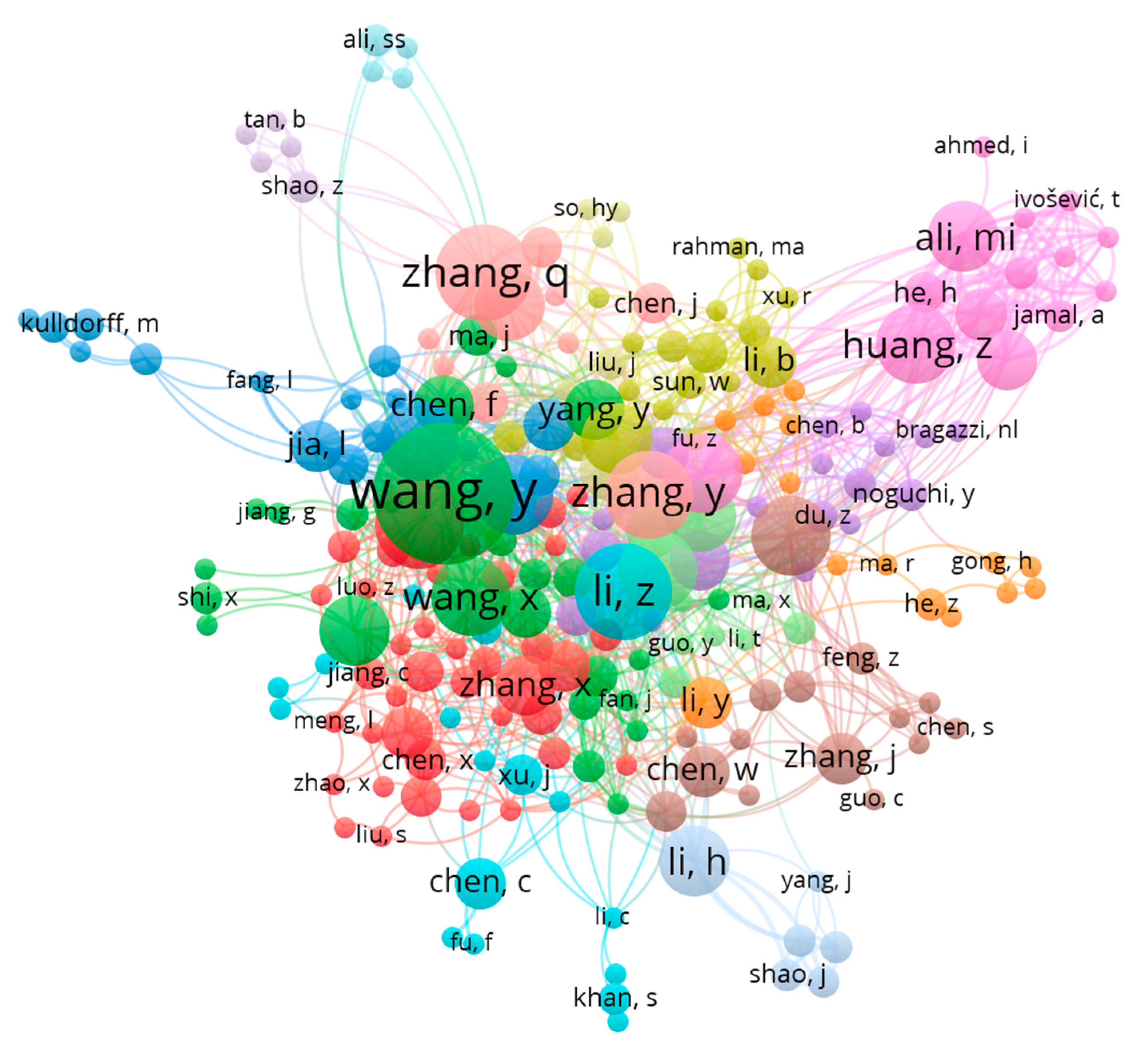
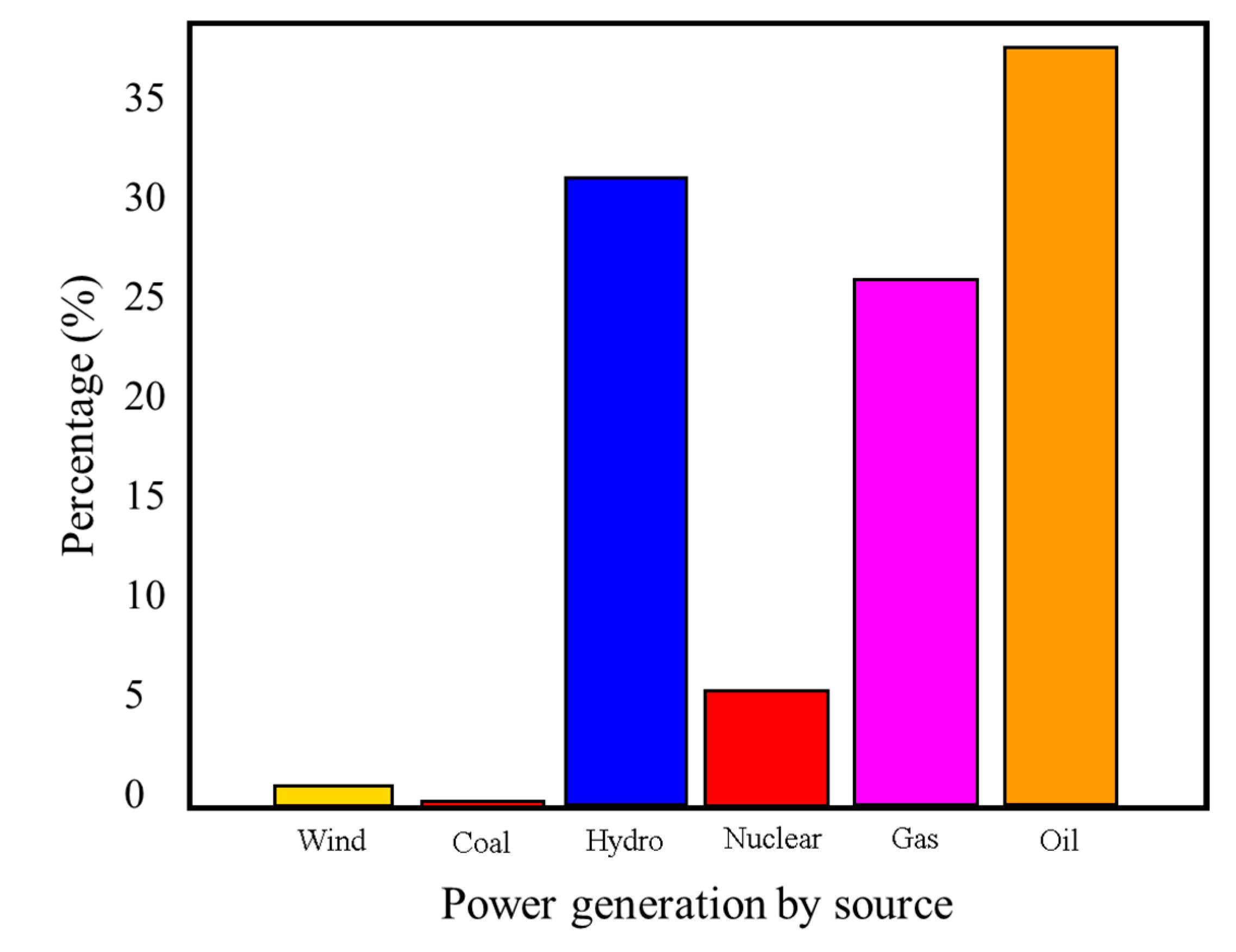


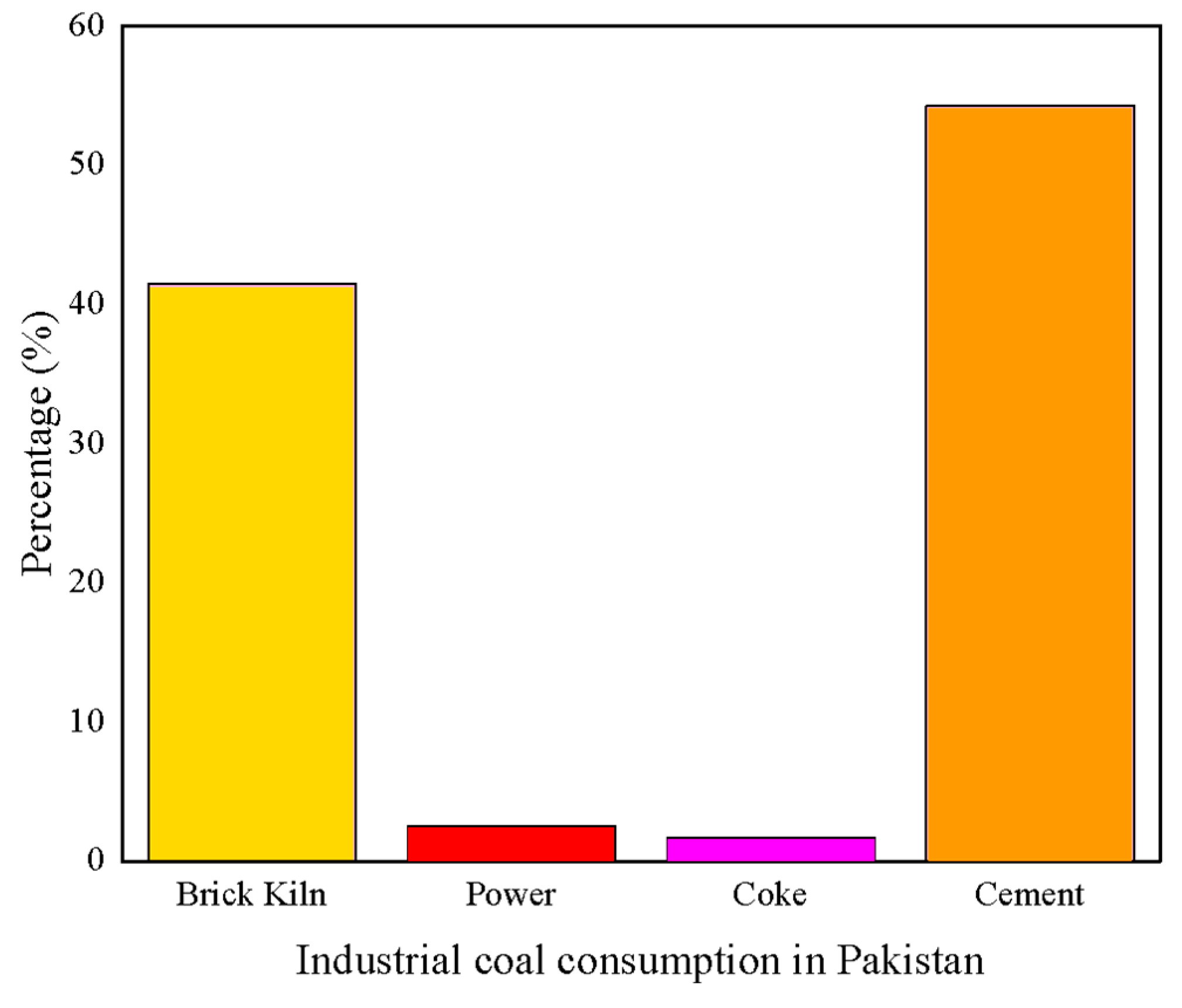
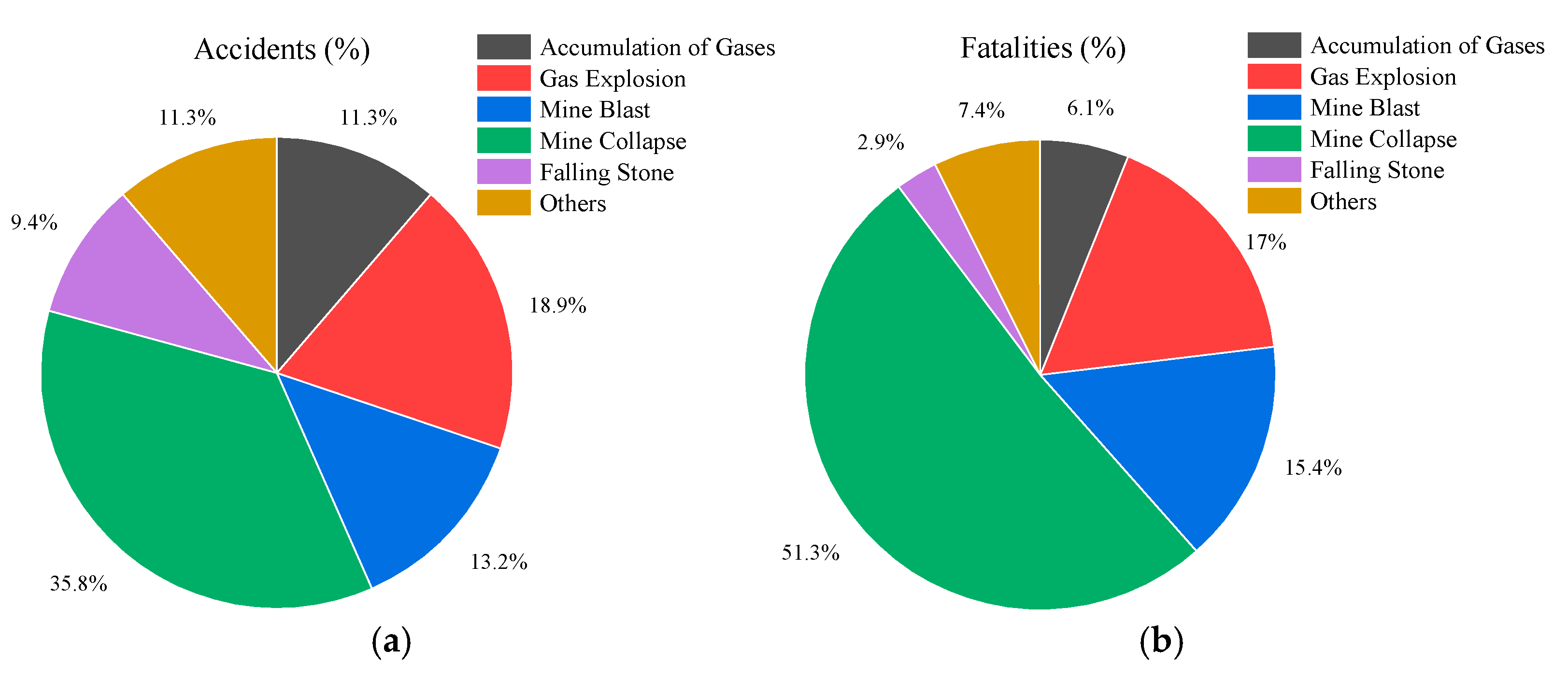
| Sr. No. | Location of Coal Field | Coal Resources (Billion Tons) | |
|---|---|---|---|
| 1 | Sindh: | Lakhra | 184.623 |
| Sonda | |||
| Thatta | |||
| Jherruck | |||
| Thar | |||
| Haji Coal and others | |||
| 2 | Punjab: | Eastern Salt Range | 0.235 |
| Central Salt Range | |||
| Makerwal | |||
| 3 | Balochistan: | Khost-Sharig-Harnai | 0.217 |
| Sor Range/Degari | |||
| Duki, Mach-Kingri | |||
| Musakhel Abegum | |||
| Pir Ismail Ziarat | |||
| Chamalong | |||
| 4 | Khyber Pakhtunkhwa | 0.092 | |
| 5 | Azad Jammu Kashmir | 0.009 | |
| Total | ~185 | ||
| Items | Sindh | Punjab | Balochistan | Khyber Pakhtunkhwa | Azad Kashmir |
|---|---|---|---|---|---|
| No. of accidents | 4 | 1 | 28 | 19 | 1 |
| No. of fatalities | 12 | 1 | 219 | 77 | 3 |
| Safety Challenges | Consequences | Preventive Measures | References |
|---|---|---|---|
| Lack of safety training and awareness among miners | Increased risk of accidents and injuries | Implement regular safety training programs; raise awareness about safety protocols | [43,44] |
| Inadequate emergency response plans | Delayed response to accidents | Develop detailed emergency response plans; conduct regular drills | [44,45] |
| Poor ventilation systems | Higher exposure to hazardous gases and dust | Upgrade ventilation systems; monitor air quality continuously | [46,47] |
| Unsafe behavior and lack of compliance with safety rules | Higher incidence of accidents | Enforce strict safety regulations; provide incentives for adherence to safety protocols | [48] |
| Lack of effective risk assessment and management | Uncertainty in hazard identification and mitigation | Use advanced risk assessment tools; regularly update risk management strategies | [45] |
| Insufficient safety monitoring systems | Difficulty in early detection of safety hazards | Install advanced monitoring systems; use IoT for real-time monitoring | [44,45] |
| Inadequate communication systems underground | Communication breakdown during emergencies | Improve underground communication systems; implement reliable communication protocols | [45] |
| Lack of governmental oversight and regulation | Higher incidence of safety violations | Strengthen regulatory framework; enforce stricter penalties for non-compliance | [44] |
| Economic and operational challenges during boom periods | Economic impacts of mining booms on safety and risk management | Overview of the mining industry’s economic boom and its impacts on safety and risk management | [49] |
| Hazard identification methodologies for risk management | Development and evolution of safety management systems | Building risk precontrol management systems; implementing polarized hazard management | [50,51,52] |
| Occupational hazards such as hand tools, material handling, machines, and environment/work/geological/strata conditions among Indian coal miners | High annual injury rates (5.5% for Indian coalminers, 14.9% for French) | Designing prevention strategies considering workers’ age | [53,54] |
| Complex dynamics of multi-player game playing in coal mine safety regulation under bounded rationality | Fluctuations in stakeholder strategy selections and game outcomes | Adoption of dynamic penalty strategies to stabilize the game and reduce safety risks | [55] |
| Utilizing knowledge sharing to enhance risk management practices in coal mining | Improved safety practices and risk management in Greek coal mining | Utilizes RISKGATE database for sharing tacit safety knowledge among stakeholders in the industry | [56] |
| Systemic hazards, human factors, and safety culture influencing organizational safety | Organizational accidents and systemic failures | Emphasizes proactive safety measures, safety culture development, and systemic risk management strategies | [57] |
| Quarry risks, Failure Modes and Effects Analysis (FMEA) | Reduced incidence of quarry hazards | Implementation of Failure Modes and Effects Analysis (FMEA) for risk mitigation in quarries | [58] |
| Collision hazards in underground mines | Mitigated collision incidents in Spanish underground mines | Improved safety protocols and training to reduce collisions in underground mines | [59] |
| Vegetation as ecological indicator in mining area restoration | Improved assessment of environmental restoration in mining areas | Integration of vegetation monitoring for assessing environmental recovery in mining areas | [60] |
| Demonstration of risk control effectiveness and safety barrier performance in mining | Improved safety performance and risk mitigation in mining operations | Demonstrating risk control and safety barrier performance using bow-tie diagrams in mining | [61] |
| Learning from incidents and accidents using bow-tie diagrams in mining | Enhanced incident response and prevention through learning processes | Application of bow-tie diagrams for learning from incidents and accidents in mining | [62] |
| Utilizing knowledge sharing to enhance risk management practices in coal mining | Improved safety practices and risk management in Greek coal mining | Utilizes RISKGATE database for sharing tacit safety knowledge among stakeholders in the industry | [56] |
| Age, length of service, and job roles affecting work-related injuries | Varied injury risks across different age groups and job roles | Consideration of age and length of service in injury prevention strategies | [63] |
| Exact kNN queries, high-dimensional data space | Improved efficiency in data retrieval and pattern recognition in mining applications | Adoption of advanced kNN query methods tailored for high-dimensional data | [64] |
| Gas hazard identification, neural network models | Enhanced accuracy in gas hazard prediction | Adoption of machine learning for gas hazard identification in underground coal mines | [65] |
| Safety Challenges | Consequences | Preventive Measures |
|---|---|---|
| Outdated and primitive coal extraction technologies | Low productivity and increased safety issues | Adoption of semi-mechanized systems, particularly for underground mines, to enhance productivity and reduce accidents |
| Poor and inadequate roof support | Increased fatalities due to roof collapses | Implementation of semi-mechanized roof support systems to ensure safety and increase coal productivity |
| Manual coal mining and handling | High number of accidents and fatalities | Mechanization of coal mines to reduce manual coal-cutting effort and improve safety and production |
| Inadequate ventilation systems | Accumulation of toxic gases leading to gas explosions and deaths | Proper ventilation design with maximized fan capacity and isolation of hazardous areas to ensure proper air circulation |
| Illegal mining and non-compliance with international standards | Compromised safety and reduced coal productivity | Enforcement of mining laws and standards to ensure compliance and improve safety and productivity |
| Lack of safety awareness and PPE among miners | Increased risk of accidents and injuries | Training programs for miners on safe mining practices and provision of proper personal protective equipment (PPE) |
| Data scarcity on coal mining, particularly missing data on mine conditions and safety records | Difficulty in research and technology development results in inaccurate risk assessment, delayed response to hazardous conditions, and increased accident rates | Ensuring data availability for researchers to suggest effective mining technologies like real-time monitoring systems, IoT-based sensors, and automated data collection to ensure continuous and reliable data availability |
| Inadequate emergency response plans | Delayed response to accidents | Develop detailed emergency response plans; conduct regular drills |
| Lack of effective risk assessment and management | Uncertainty in hazard identification and mitigation | Use advanced risk assessment tools; regularly update risk management strategies |
| Insufficient safety monitoring systems | Difficulty in early detection of safety hazards | Install advanced monitoring systems; use IoT for real-time monitoring |
| Inadequate communication systems underground | Communication breakdown during emergencies | Improve underground communication systems; implement reliable communication protocols |
| Lack of proper coal extraction planning | Increased safety risks due to inadequate assessment of geological conditions and mining hazards, leading to unexpected roof collapses, gas leaks, and water inrush incidents | Conduct detailed geological surveys and develop comprehensive technical mining projects for each coal seam (this includes assessing rock mass stability and identifying potential hazards such as methane emissions, water inrush, and fault lines); implement safety measures based on these assessments before mining operations commence; regularly update mining plans as new data become available during extraction to ensure continuous hazard mitigation; collaborate with international experts to apply best practices in mine design and risk management |
Disclaimer/Publisher’s Note: The statements, opinions and data contained in all publications are solely those of the individual author(s) and contributor(s) and not of MDPI and/or the editor(s). MDPI and/or the editor(s) disclaim responsibility for any injury to people or property resulting from any ideas, methods, instructions or products referred to in the content. |
© 2024 by the authors. Licensee MDPI, Basel, Switzerland. This article is an open access article distributed under the terms and conditions of the Creative Commons Attribution (CC BY) license (https://creativecommons.org/licenses/by/4.0/).
Share and Cite
Wang, J.; Zheng, X.; Shahani, N.M.; Guo, X.; Xin, W.; Yue, W.; Liu, L.; Yan, K. Review of Major Influencing Factors Contributing to Persisting Safety Problems in Coal Mines: Addressing Systemic Challenges. Appl. Sci. 2024, 14, 9665. https://doi.org/10.3390/app14219665
Wang J, Zheng X, Shahani NM, Guo X, Xin W, Yue W, Liu L, Yan K. Review of Major Influencing Factors Contributing to Persisting Safety Problems in Coal Mines: Addressing Systemic Challenges. Applied Sciences. 2024; 14(21):9665. https://doi.org/10.3390/app14219665
Chicago/Turabian StyleWang, Jiyu, Xigui Zheng, Niaz Muhammad Shahani, Xiaowei Guo, Wei Xin, Wei Yue, Longhe Liu, and Kai Yan. 2024. "Review of Major Influencing Factors Contributing to Persisting Safety Problems in Coal Mines: Addressing Systemic Challenges" Applied Sciences 14, no. 21: 9665. https://doi.org/10.3390/app14219665
APA StyleWang, J., Zheng, X., Shahani, N. M., Guo, X., Xin, W., Yue, W., Liu, L., & Yan, K. (2024). Review of Major Influencing Factors Contributing to Persisting Safety Problems in Coal Mines: Addressing Systemic Challenges. Applied Sciences, 14(21), 9665. https://doi.org/10.3390/app14219665








